The biannual Barnes and Noble Criterion Collection sale is now on. Or as I like to think of it, Christmas in July. Founded in 1984 the Criterion Collection, as the back of each of its DVDs and Blu-rays will tell you, is “a continuing series of important classic and contemporary films.” It’s a bespoke label for film lovers.
Every film is treated with the utmost care. Criterion cleans film prints before release and issues movies with a wealth of extras, beginning with one of the world’s first audio commentaries (for its laser disc of King Kong). If you adore a particular film, the Criterion edition is likely to be the best version of it you’ll ever own.
There are over 900 films in the Collection and it’s still growing. As I look forward to leaving Barnes and Noble, my heart and wallet considerably lightened, here are a few films I wish were part of the Collection. (Like one of the earliest Criterion films, this list goes up to 11.)
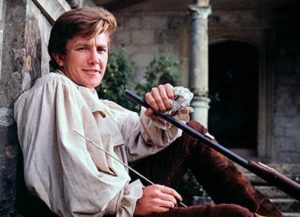 Tom Jones (1963) The crest of the British New Wave. Some films are content to make you smile; Tom Jones won’t rest until you kick up your heels and dance a jig. Tony Richardson’s adaptation of Henry Fielding’s picaresque bounds across the screen, breaking the fourth wall with impunity. The cast is a Who’s Who of two generations of British acting talent, including Susannah York, Hugh Griffith, Edith Evans, Joan Greenwood, David Warner and Lynn Redgrave, the latter two making their screen debuts. Micheál Mac Liammóir’s narration is wonderfully arch, the perfect counterpoint to the mayhem on screen, and John Addison’s score is a joy. Best of all is Albert Finney as Tom, the rapscallion no one should have to live without.
Tom Jones (1963) The crest of the British New Wave. Some films are content to make you smile; Tom Jones won’t rest until you kick up your heels and dance a jig. Tony Richardson’s adaptation of Henry Fielding’s picaresque bounds across the screen, breaking the fourth wall with impunity. The cast is a Who’s Who of two generations of British acting talent, including Susannah York, Hugh Griffith, Edith Evans, Joan Greenwood, David Warner and Lynn Redgrave, the latter two making their screen debuts. Micheál Mac Liammóir’s narration is wonderfully arch, the perfect counterpoint to the mayhem on screen, and John Addison’s score is a joy. Best of all is Albert Finney as Tom, the rapscallion no one should have to live without.
The Exile (1947) A rollicking gem, begging to be brought in from the not-on-DVD cold. After the English Civil War and before the Restoration, Charles Stuart lived in exile on the Continent, trying to recover the throne his father had lost. The Exile takes this thread and weaves it into sweeping historical fiction, with murderous Roundheads, chivalrous Cavaliers and a plucky Dutch flower girl. Douglas Fairbanks, Jr. made the film partly as a tribute to his father, swashbuckling icon Douglas Fairbanks, and not only starred in it, but produced and wrote it too. He also had the good sense to hire Max Ophüls: The Exile is one of only a handful of films the great director made in Hollywood.
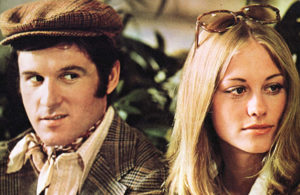 The Heartbreak Kid (1972) A Valentine’s Day card wrapped in barbed wire. Charles Grodin, in his breakout role, plays Lenny Cantrow, a shallow, outwardly-respectable Jewish boy who meets a nice, needy Jewish girl, Lila (Jeannie Berlin), and marries her. The couple have nothing in common. On their honeymoon, Lenny meets Kelly (Cybill Shepherd), a glamorous WASP, and ruthlessly pursues her, heedless of the wreckage he leaves in his wake. Elaine May’s second film as a director is a pitch black commentary on the American Dream. The jokes are so pointed they pierce the skin.
The Heartbreak Kid (1972) A Valentine’s Day card wrapped in barbed wire. Charles Grodin, in his breakout role, plays Lenny Cantrow, a shallow, outwardly-respectable Jewish boy who meets a nice, needy Jewish girl, Lila (Jeannie Berlin), and marries her. The couple have nothing in common. On their honeymoon, Lenny meets Kelly (Cybill Shepherd), a glamorous WASP, and ruthlessly pursues her, heedless of the wreckage he leaves in his wake. Elaine May’s second film as a director is a pitch black commentary on the American Dream. The jokes are so pointed they pierce the skin.
The Scarlet Pimpernel (1934) They seek him here, they seek him there. Those film fans seek him everywhere. Is he in heaven, or in cheap-print-DVD hell? That damned elusive Pimpernel. The definitive screen adaptation of Baroness Orczy’s classic novel stars Merle Oberon, Raymond Massey, Alexander Korda’s lavish production values and Leslie Howard. Forget Ashley Wilkes; Sir Percy Blakeney is the part Howard was born to play. He is magnificent, one of the most entertaining swashbucklers on celluloid.
Knight Without Armour (1937) Another Korda production. Robert Donat plays a British spy, Marlene Dietrich a Russian countess. Thrown together during the Russian Revolution, they fall in love but must fight to survive. Dietrich and Donat share palpable chemistry and the film feels like a modern twist on an old chivalric romance. It deserves a wider audience.
Memories of Murder (2003) The story of the investigation into South Korea’s first serial killer. In a small town, a ragtag band of policemen, led by the boorish Park Doo-man (Song Kang-ho), discover the bodies of two murdered women and make a hash of the case, bungling the collection of evidence and operating on guesswork rather than fact. Detective Seo Tae-yoon (Kim Sang-kyung) arrives from Seoul to help, only to clash with Park. Director and co-writer Bong Joon-ho makes it impossible for you to keep your footing: one moment, the detectives are cracking crude jokes; the next they’re viciously beating a suspect to get him to confess.
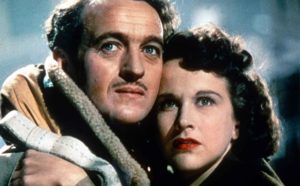 A Matter of Life and Death (1946) A Matter of Life and Death is one of Powell and Pressburger’s best films, which means it is one of the best films ever made. From the early 1940s to the late 1950s, Michael Powell and Emeric Pressburger, known collectively as the Archers, made a group of daring, influential films unique in British cinema. Life and Death was the first I saw and remains my favourite. It’s May 1945 and Squadron Leader Peter Carter (David Niven) is trying to fly a badly damaged Lancaster bomber back to base. He makes contact with June (Kim Hunter), an American radio operator at the base, and they talk briefly before June realises just how serious his predicament is. The plane is on fire and Peter hasn’t got a parachute. What follows is one of the most dazzling, romantic and profound experiences I have ever had at the movies.
A Matter of Life and Death (1946) A Matter of Life and Death is one of Powell and Pressburger’s best films, which means it is one of the best films ever made. From the early 1940s to the late 1950s, Michael Powell and Emeric Pressburger, known collectively as the Archers, made a group of daring, influential films unique in British cinema. Life and Death was the first I saw and remains my favourite. It’s May 1945 and Squadron Leader Peter Carter (David Niven) is trying to fly a badly damaged Lancaster bomber back to base. He makes contact with June (Kim Hunter), an American radio operator at the base, and they talk briefly before June realises just how serious his predicament is. The plane is on fire and Peter hasn’t got a parachute. What follows is one of the most dazzling, romantic and profound experiences I have ever had at the movies.
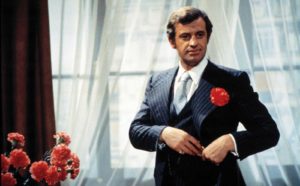 Stavisky… (1974) What happens when a master con artist starts believing his own lies? Stavisky… follows the final months in the life of Alexandre Stavisky (Jean-Paul Belmondo), financier and embezzler and the centre of a political scandal that engulfed the highest echelons of 1930s France. The film isn’t just about the Stavisky Affair. It’s also a threnody for the lost Age of Elegance (every surface glistens, from cars to jewels to crisp white shirts) and a meditation on the power of illusion. Director Alain Resnais plays with time—juxtaposing flashbacks and flash-forwards—to almost hypnotic effect and Belmondo is magnetic as a man who believes his own lies so deeply, he almost makes them real. The film also features Charles Boyer’s last great performance, as a genial aristocrat, and a sinuous foxtrot theme by Stephen Sondheim that follows you for days afterward.
Stavisky… (1974) What happens when a master con artist starts believing his own lies? Stavisky… follows the final months in the life of Alexandre Stavisky (Jean-Paul Belmondo), financier and embezzler and the centre of a political scandal that engulfed the highest echelons of 1930s France. The film isn’t just about the Stavisky Affair. It’s also a threnody for the lost Age of Elegance (every surface glistens, from cars to jewels to crisp white shirts) and a meditation on the power of illusion. Director Alain Resnais plays with time—juxtaposing flashbacks and flash-forwards—to almost hypnotic effect and Belmondo is magnetic as a man who believes his own lies so deeply, he almost makes them real. The film also features Charles Boyer’s last great performance, as a genial aristocrat, and a sinuous foxtrot theme by Stephen Sondheim that follows you for days afterward.
The Stranger (1967) Luchino Visconti’s adaptation of Albert Camus’ novel is missing in action: absent from television and streaming, never released on video and very much not on DVD. A rare screening, part of the Film Society of Lincoln Centre’s recent Marcello Mastroianni retrospective, was sold out. At first glance, Mastroianni seems an odd choice as Mersault, a man so apathetic he barely exists. The actor had such presence on screen that it’s hard to believe he could ever be beneath notice. Yet the casting works. Mersault is the façade of human being, with a gaping void beneath. He feels nothing deeply, not joy or anger or sorrow, and is terrifying in his blankness. The Stranger is more about mood than action. Like Mastroianni’s performance, it crawls under your skin.
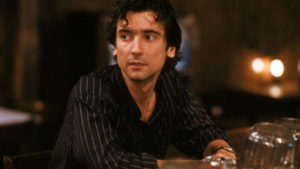 After Hours (1985) If you go down to SoHo tonight, you’re sure for a big surprise. Martin Scorsese’s quintessentially New York odyssey, about a yuppie stranded downtown at night, feels like a series of darkly comic one-act plays—all starring Paul (Griffin Dunne), an average guy the universe has taken a sudden dislike to. SoHo becomes a netherworld that operates by its own surreal logic and where the locals are anything but friendly. To paraphrase Sinatra, if you can survive here, you can survive anywhere.
After Hours (1985) If you go down to SoHo tonight, you’re sure for a big surprise. Martin Scorsese’s quintessentially New York odyssey, about a yuppie stranded downtown at night, feels like a series of darkly comic one-act plays—all starring Paul (Griffin Dunne), an average guy the universe has taken a sudden dislike to. SoHo becomes a netherworld that operates by its own surreal logic and where the locals are anything but friendly. To paraphrase Sinatra, if you can survive here, you can survive anywhere.
Cluny Brown (1946) Some people like to feed nuts to the squirrels. But if it makes you happy to feed squirrels to the nuts, who am I to say ‘nuts to the squirrels’? Ernst Lubitsch’s last complete film is a beguiling comedy of manners that manages to tackle poverty, fascism, feminism and the British class system, all with the director’s signature light touch. Cluny Brown (Jennifer Jones) is a free-spirited young woman who is constantly told that she doesn’t know her place. Adam Belinksi (Charles Boyer), a Czech refugee exiled by the Nazis, has lost his. Together they shake up the decorous lives of everyone they meet. Lubitsch laughs, sometimes fondly, sometimes not, at the foibles of men and women both high and low. Criterion has several of his films in the Collection. Surely there’s room for one more.
Leave a Reply